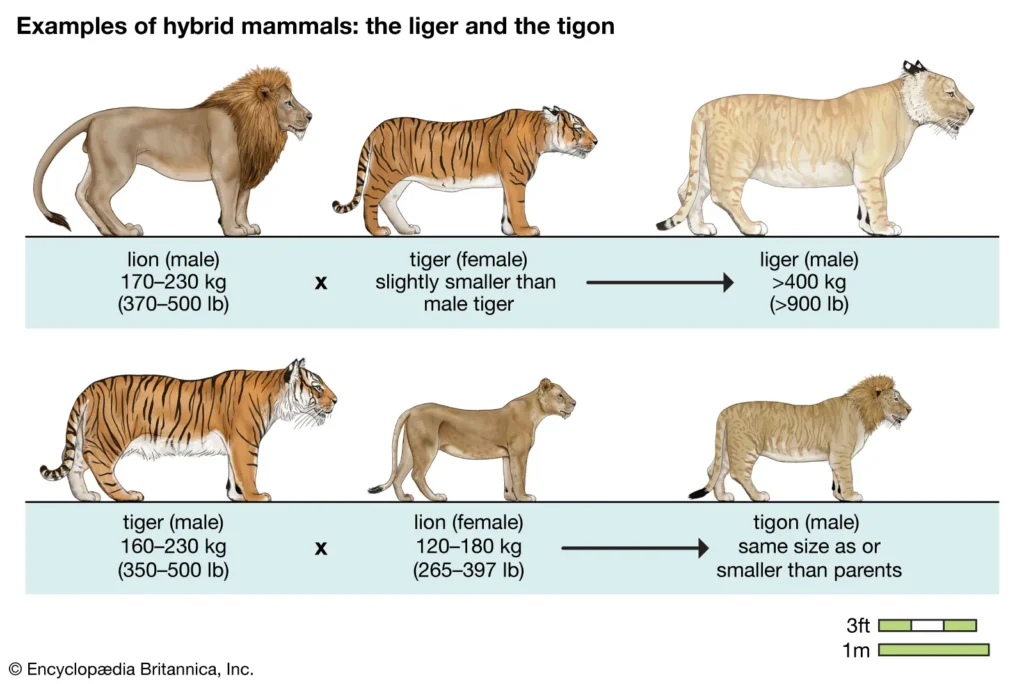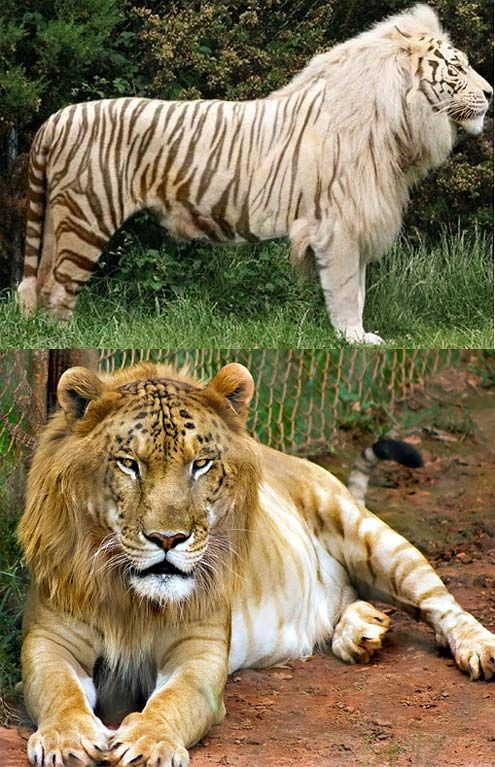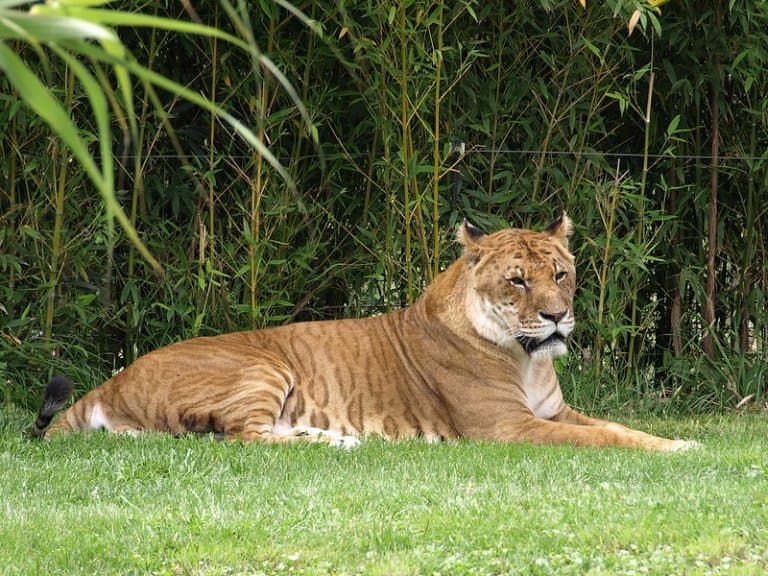Tigon: Between Stripes and Manes
A tigon is a hybrid big cat resulting from the crossbreeding of a male tiger and a female lion. It is the opposite cross to the liger, which is produced by mating a male lion with a female tiger. The tigon and liger are not found in the wild, as lions and tigers are native to different regions and have different habitats and behaviors.

First tigon record:
The first recorded tigon is attributed to an individual named William Henry Flower, who was the Director of the Zoological Gardens in London during the late 19th century. Flower documented the birth of a tigon at the zoo in 1897. The tigon was the result of a male tiger and a lioness mating.
This historical record is significant as it marked one of the early instances of documented hybridization between a lion and a tiger in a controlled environment. The birth of the tigon garnered attention and interest in the field of zoology and contributed to the understanding of reproductive biology and genetics of big cats.

Taxonomy of tigon:
1. Family: Felidae
- The Felidae family includes all modern cat species and is commonly referred to as the cat family.
2. Genus: Panthera
- The Panthera genus comprises the “big cats” and includes species such as lions, tigers, leopards, jaguars, and snow leopards.
3. Species:
- Tiger (Panthera tigris): Tigers are known for their distinctive orange coat with dark stripes. They are native to various parts of Asia.
- Lion (Panthera leo): Lions are known for their social behavior and are native to parts of Africa and Asia.
The tigon itself does not fit neatly into the standard taxonomic hierarchy because it is a hybrid created through human intervention in captivity. While it inherits genetic material from both parent species, it is not a naturally occurring species in the wild.

Physical Appearance:
- Tigons typically exhibit a combination of physical characteristics from both parent species. They may have features such as stripes like a tiger and a mane like a lion.
- The specific appearance can vary widely among individual tigons, depending on the genetic traits inherited from each parent.
2. Size:
- Tigons are generally smaller than their parent species. The size of a tigon falls between that of a lion and a tiger.
3. Habitat:
- Tigons do not exist in the wild. They are primarily bred in captivity, and their presence is a result of human intervention.
4. Behavior:
- Behavioral traits of tigons can vary, influenced by the individual personality of the animal and the specific characteristics inherited from the lion and tiger parents.
5. Genetic Factors:
- The genetics of tigons involve a combination of the genetic material from both the lion and tiger parents. Each parent contributes specific genes that influence the physical and behavioral traits of the offspring.
6. Captive Breeding:
- Tigons are generally bred in captivity, often in zoos or private facilities. The intentional breeding of tigons and ligers is a subject of ethical debate due to concerns about the well-being and health of the hybrid animals.
7. Conservation Status:
- Tigons, like ligers, do not contribute to the conservation of wild lion or tiger populations. Conservation efforts typically focus on preserving the natural habitats and populations of these species in their native regions.

Health Concerns:
Genetic Issues: Hybrid animals may face health problems resulting from the combination of genes from different species. These issues can include skeletal abnormalities, organ dysfunction, and a range of other genetic anomalies.
Reproductive Challenges: Hybrid animals may experience difficulties in reproduction. Fertility issues can arise, and even if offspring are produced, they may inherit a mix of genetic traits that could affect their health.

Controversies and Conservation:
1. Ethical Concerns:
- Welfare of Hybrid Animals: There are concerns about the well-being of tigons and other hybrid animals bred in captivity. Hybridization may lead to health issues, and the animals might face challenges in adapting to their environment.
- Purpose of Breeding: Questions arise about the ethical purpose of intentionally breeding tigons. Some view it as a form of exploitation for commercial or entertainment purposes, while others argue that it contributes little to conservation efforts.
2. Conservation Impact:
- Conservation Focus: Conservation efforts typically prioritize the preservation of species in their natural habitats. Breeding hybrid animals like tigons does not contribute to the conservation of wild populations of lions or tigers.
- Dilution of Genetics: The intentional breeding of hybrids can lead to a dilution of the genetic integrity of individual species. Maintaining the genetic diversity of species in their natural habitats is crucial for long-term survival.
3. Education and Awareness:
- Public Perception: Controversies surrounding the breeding of tigons highlight the need for education and awareness. Public perception plays a crucial role in influencing policies and practices related to the breeding and care of hybrid animals.
- Educational Value: Some argue that the presence of hybrid animals in captivity can serve an educational purpose, helping people learn about different species and the complexities of genetics. However, others emphasize the importance of focusing on the conservation of species in their natural environments.